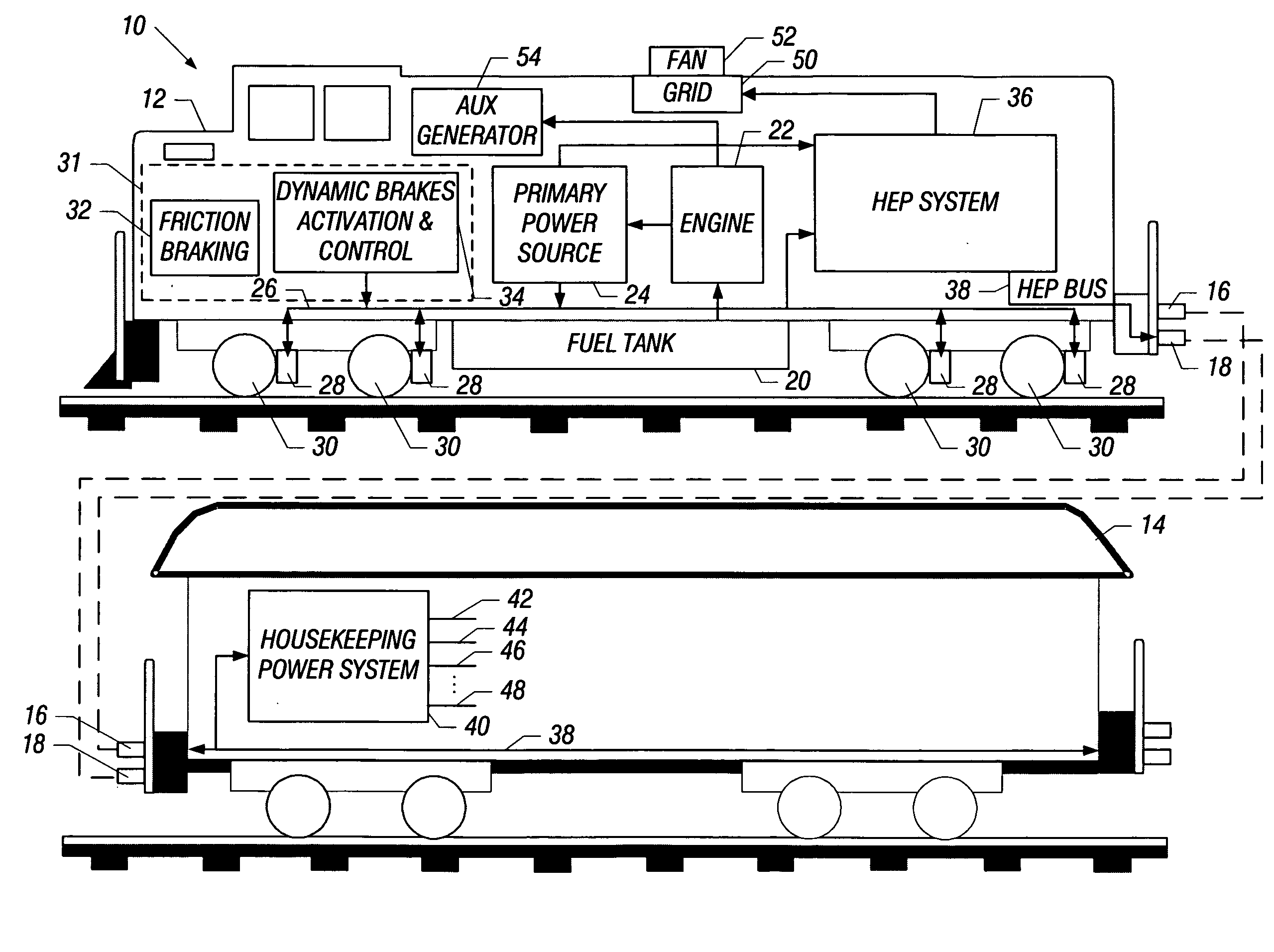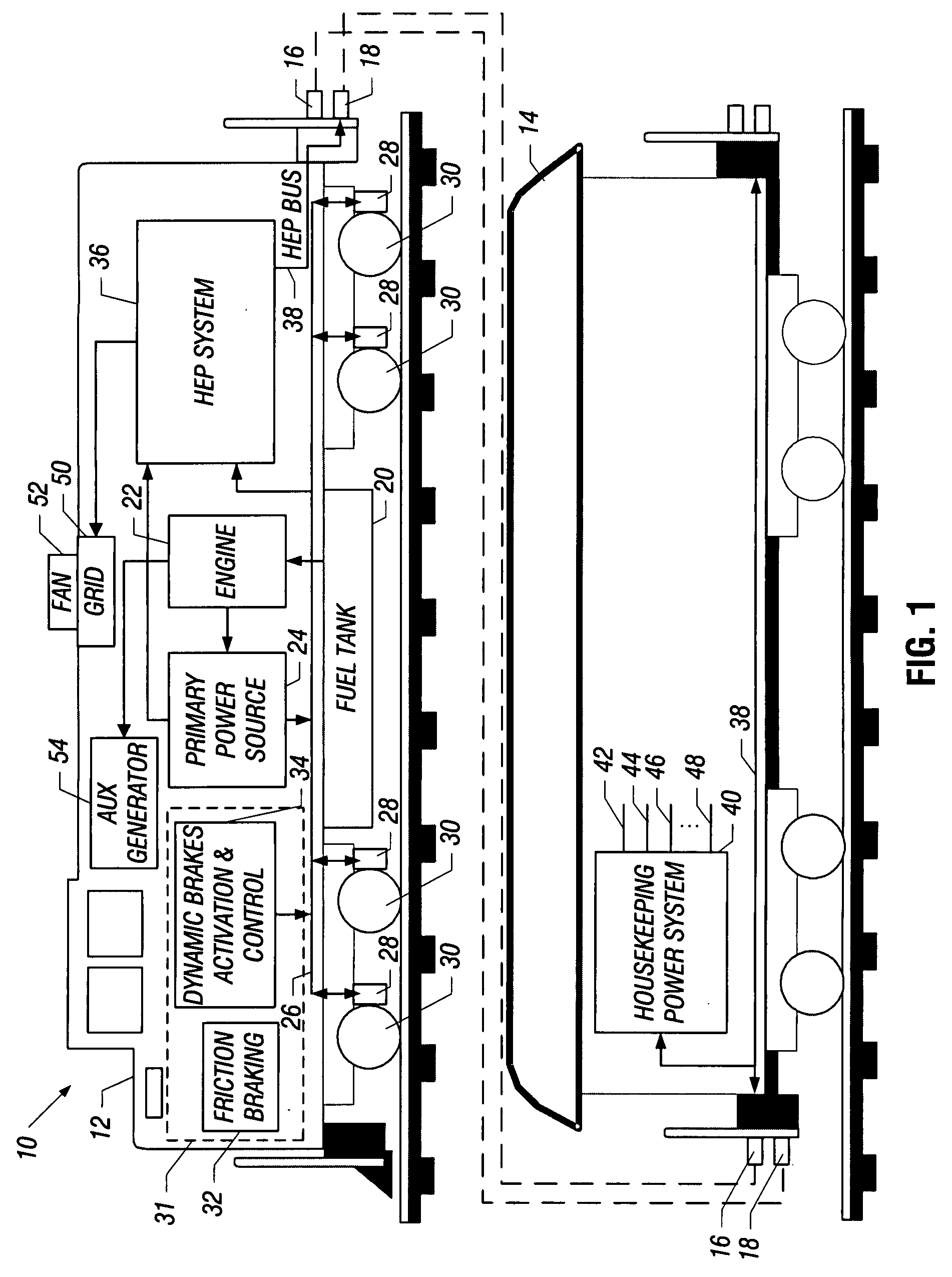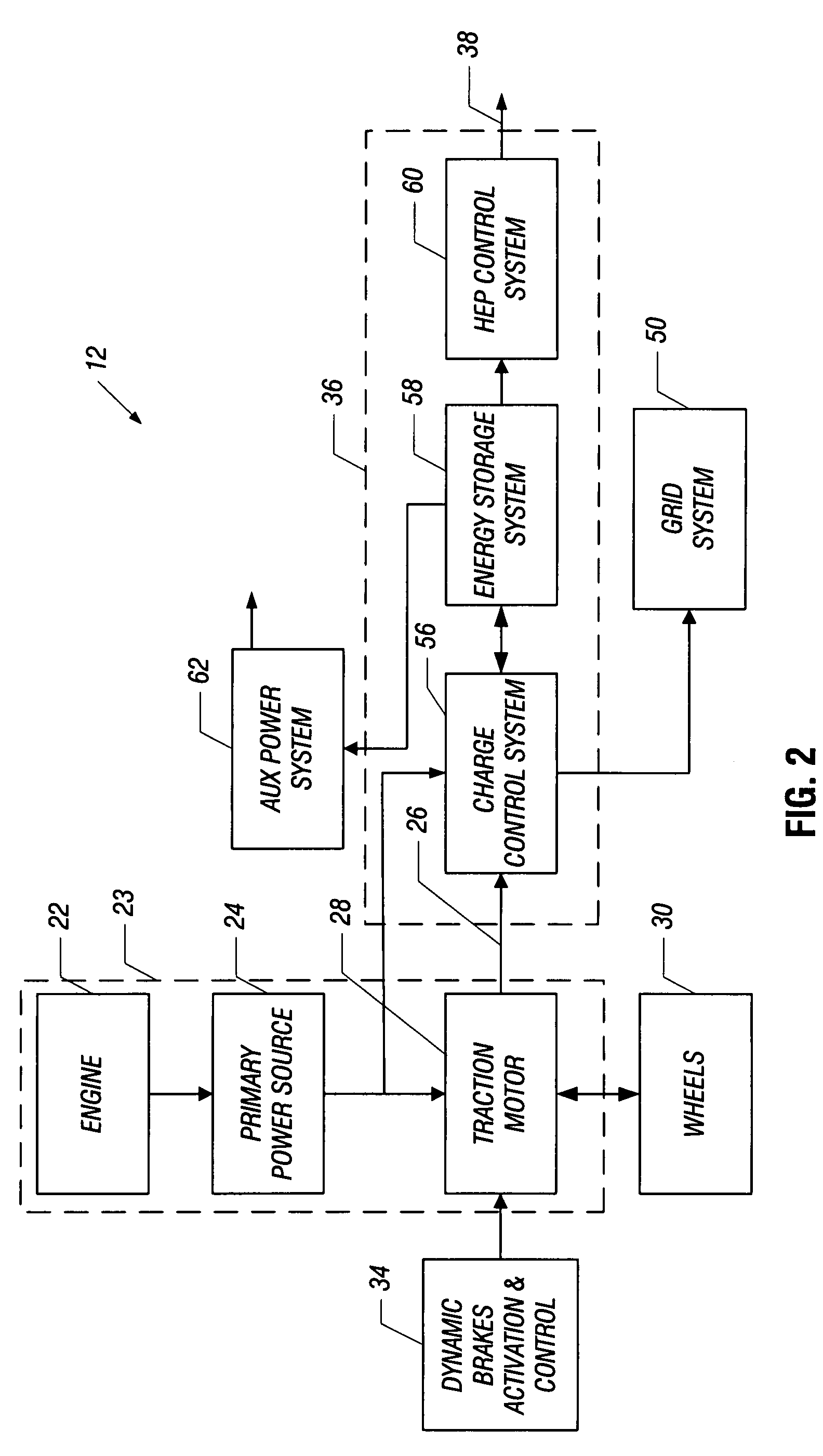System and method for providing head end power for use in passenger train sets
a passenger train and head end technology, applied in the field of railway train sets, can solve the problems of separate system, high noise and harmful emissions, and less horsepower available for accelerating
- Summary
- Abstract
- Description
- Claims
- Application Information
AI Technical Summary
Problems solved by technology
Method used
Image
Examples
Embodiment Construction
FIG. 1 shows an exemplary embodiment of a passenger train set 10 that includes a diesel locomotive 12 and at least one passenger railcar 14. Railcar 14 is mechanically and electrically coupled to locomotive 12 via coupling connections 16 and 18, respectively. In general, locomotive 12 carries a propulsion system 23 (see FIG. 2) that includes a main engine 22, a primary power source 24, a traction bus 26, and a plurality of traction motors 28. Locomotive 12 also carries a fuel tank 20 that provides fuel to the primary engine 22.
The primary power source 24 provides primary power in the appropriate form required by the particular traction bus 26 and may include, for example, a generator, an alternator, etc. Propulsion system 23 is operable in a motoring mode in which train set 10 is moved or accelerated on a track and in a dynamic braking mode in which train set 10 is slowed or brought to a stop. In the motoring mode, main engine 22 drives primary power source 24 which then produces pr...
PUM
 Login to View More
Login to View More Abstract
Description
Claims
Application Information
 Login to View More
Login to View More - R&D
- Intellectual Property
- Life Sciences
- Materials
- Tech Scout
- Unparalleled Data Quality
- Higher Quality Content
- 60% Fewer Hallucinations
Browse by: Latest US Patents, China's latest patents, Technical Efficacy Thesaurus, Application Domain, Technology Topic, Popular Technical Reports.
© 2025 PatSnap. All rights reserved.Legal|Privacy policy|Modern Slavery Act Transparency Statement|Sitemap|About US| Contact US: help@patsnap.com



